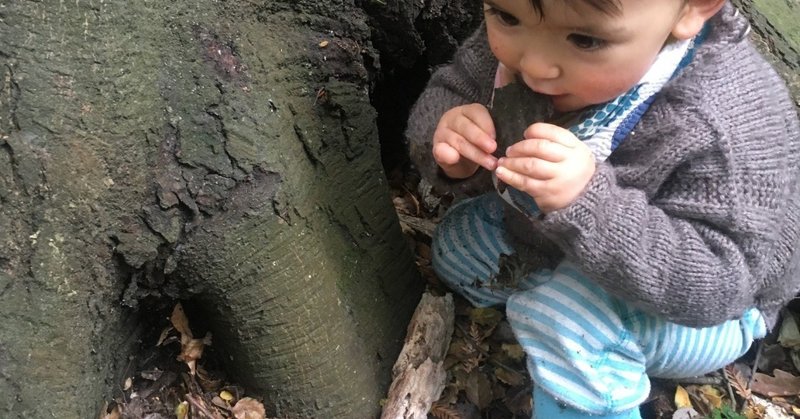
なんでも口に入れる乳児を外遊びさせるとどうなるのか。What happens when you take a baby who eats everything outside.
ニュージーランドの気楽なところは、基本的に有害な虫や動物が他の国と比べるとかなり少ないということ。毒蜘蛛、毒ヘビ、その他野生生物など人間に危害を加えるものはほとんどいない。小さな子供を自由に遊ばせて気楽な環境である。しかし、乳幼児は何せなんでも口に入れる。だから本当に毎回Toroaを連れ出すたびに、周りにある木や植物が口に入れても大丈夫なものかどうか、携帯でググることになる。
仕事がら、よく子供たちや親御さんから植物や木々に関する質問をよく受ける。大抵「これは何?食べれるのかな?」というのが90%の質問だ。なので、よく目にする草花やニュージー原生植物のことは、調べたし、教えたし、何が食べられるやつで何が毒のあるのか、大まかなことは結構わかっている方だと思っていた。が、いやはや、調べれば調べるほど、自分の無知さを思い知る。この間Bush Farm Schoolのセッションで子供が大きな黄色い実を見つけて拾った。そこにいたお母さんが、これ何だかわかる?と私に聞く。多分カラカ(Karaka)だと思う。近くに幼木があるから。Kereru(NZ原生の鳩)が好きな実なんだよね。と話した。毒があったような気もするが、記憶が曖昧だったので調べ直してみたら、こんなのが出てきた。
”カラカの生の種は特に毒性が強く、これを摂取した人は激しく痙攣し身体が麻痺する。カラカの毒にあたった人に対するマオリの治療法は口を塞ぎ、敷物に体を包んで、土の中に首まで埋めるものだった” (出典: https://meaningoftrees.com/tag/karaka/)
ひえええええっ!怖っ!
そんな毒があるのにもかかわらず、熱を加えることで食用になり、マオリにとって大切な食料だったとのこと。そして、この手の、植物は結構多い。そのまま食べると毒だけどきちんと調理すれば大丈夫、とか。茎は食べれるけど葉っぱは毒、とか。春の間は毒性が強いけど、秋が近くなると大丈夫、とか。一口にこれは毒で、これは食べれる、と言い切れないものがやたらあるのだ。面白い、毎回何かを学ぶ。
なので、
問い:なんでも口に入れる乳児を外遊びさせるとどうなるのか。
答え:自分が植物オタクになる。
Every time I let Toroa out in the natural environment, she puts pretty much anything and everything into her mouth. Hence, I tend to choose a spot that doesn't have trees and plants that are obviously poisonous. Consequently, I go on Google constantly to check the toxicity of different plants and trees around us at a time.
On the other day at a Bush Farm School session, one child picked up a big yellow fruit from the ground and brought it to her mother. She asked me what it was. I told her that it would be a karaka berry as there were few trees around. I told them that Kereru loves the berries. What I didn't know was how toxic the berries are. As I found out,
”The raw kernels of these berries carry the toxin Karakin, which is highly poisonous. Humans who consume the kernels convulse in violent spasms that leave them physically distorted and paralyzed. Māori treatment for Karaka poisoning was to gag the victim, roll them up in mats and bury them up to their neck.” Ref: https://meaningoftrees.com/tag/karaka/
I felt chill on my back as I read this. Fxcking hell... So lucky that no one ate one, and the next time a very young child picks it up, I will be sure to stop him/her. However, despite the danger, Māori still ate them after appropriate treatment. There are so many plants/trees like Karaka that they are toxic in one way or another but could still be edible in other ways. Some plants are toxic in certain parts and edible in the other parts. Some are toxic more in Spring/ Summer, and, in Autumn, they are fine.
I thought I have a fair amount of general knowledge in plants and trees, but, (Ha!) the more I learn, the more I realize how ignorant I am!
Hence,
What happens when you take a baby who eats everything outside?
It turns you into a botanic geek.
この記事が気に入ったらサポートをしてみませんか?
